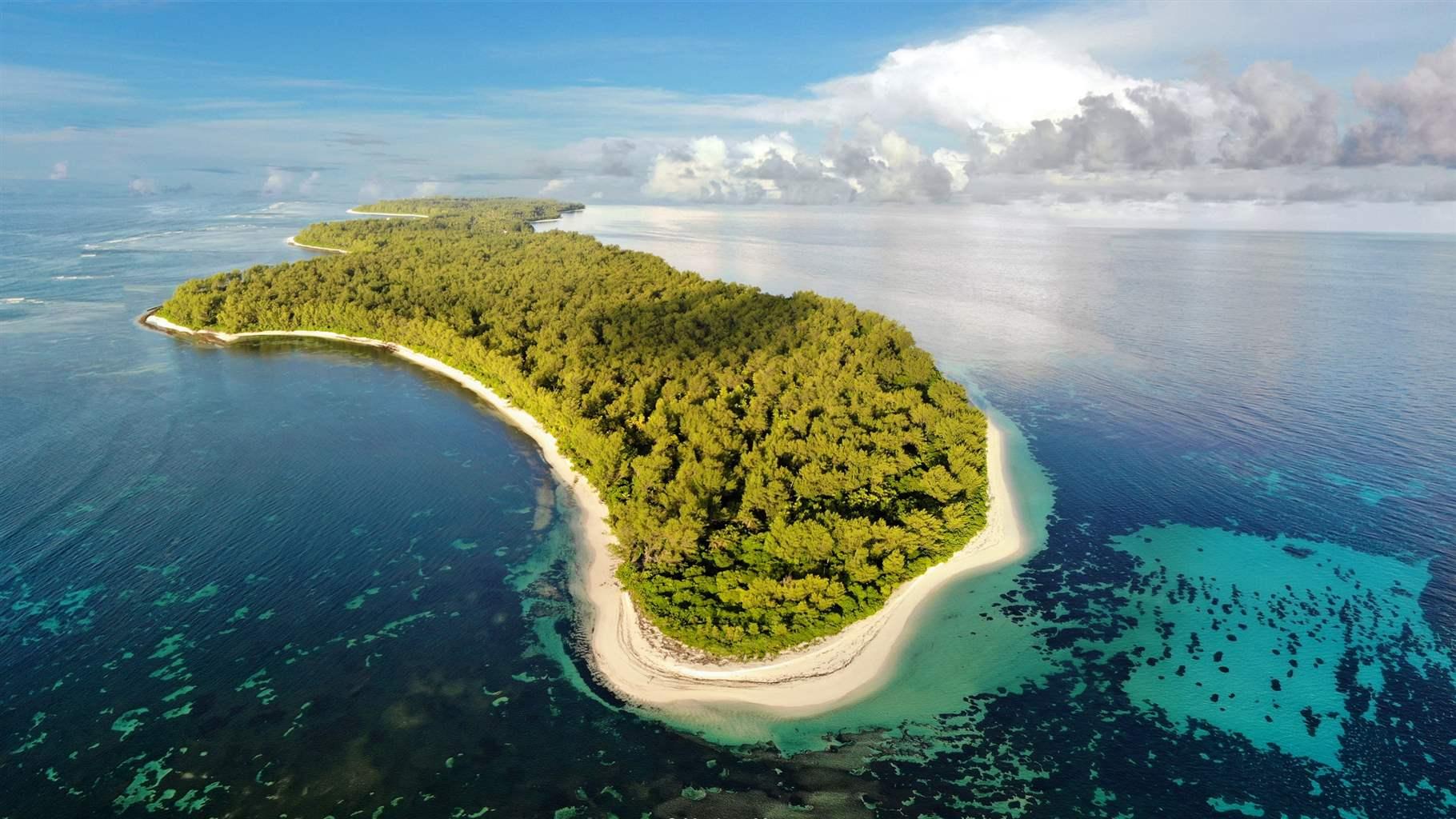Ocean Protections Increasingly Seen as Key to Countering Climate Change
As science advances, more governments leverage safeguards to support Paris Agreement goals

Note: This article was updated Dec. 3 to clarify that research would establish the potential, not actual, carbon storage value of some nature-based solutions, and that those solutions are not yet included in governments’ commitments under the Paris Agreement.
Among the starkest effects of climate change are those occurring in our ocean, from mass coral bleaching events and shifting fish migrations to the spawning of record-intensity hurricanes—all of which can affect people’s lives along the coast and far inland. The 2019 Intergovernmental Panel on Climate Change’s (IPCC) Special Report on the Ocean and Cryosphere in a Changing Climate highlighted the scale and pace of change in our ocean and its effect on people and biodiversity.
Fortunately, scientists and policy makers are increasingly seeing the ocean as a potential solution to climate change, not solely as evidence of these global shifts. Specifically, research is showing that stronger coastal and marine protections could play a role in helping to address and shield against the impacts of climate change. In a move that could help science better inform policy, the United Nations Framework Convention on Climate Change (UNFCCC) will host an Ocean and Climate Dialogue on Dec. 2-3, where nature-based solutions—actions to protect, sustainably manage, and restore ecosystems—will be high on the list of potential actions to counter the growing threat of climate change.
Studies show that healthy coastal habitats such as mangroves, seagrass beds, and salt marshes—collectively, coastal wetlands—can mitigate climate change if sufficiently protected and help governments achieve their goals under the Paris Agreement. Through methodologies approved by the IPCC, countries can include the carbon sequestered and stored by coastal wetlands in their emission-reduction commitments. Coastal wetlands also absorb energy from storm surges, help limit shoreline erosion, filter water, and act as nursery grounds for a range of species. Their protection therefore not only conveys measurable mitigation benefits but also sustains a range of adaptation gains and enhances ecosystem resilience to a changing climate—a “triple win” in addressing climate change.
A growing number of governments see this opportunity to include coastal wetland protections in their nationally determined contributions (NDCs) to the Paris Agreement; Belize, Costa Rica, and Seychelles are among those planning to do so, and The Pew Charitable Trusts is working with local partners in those countries to support their goals.
Because scientific understanding of the measurable mitigation benefits of other marine protections is still developing, the inclusion of coastal wetlands protections within these NDC revisions can provide key lessons on how other ocean safeguards could advance climate policy.
Ahead of the Ocean and Climate Dialogue, the UNFCCC’s Subsidiary Body for Scientific and Technological Advice published a summary of evidence submitted noting the need for further research to better understand both how much carbon nature-based solutions other than coastal wetlands can sequester and the interconnected role of climate and nature—knowledge that will help in applying those solutions.
Such research is central to establishing the potential long-term carbon storage value of nature-based solutions beyond coastal wetlands if they are to be included in countries’ mitigation commitments. And some governments are looking to advance this understanding. For example, Chile, in its recently submitted NDC, committed to further assessing the climate benefits of its marine protected areas.
However, even as this mitigation research progresses, the benefits of the full suite of marine protections in enhancing resiliency and helping people to adapt to climate change should remain at the forefront of the global policy discussion. Coral reefs have proven benefits in attenuating wave energy and storm surges. Broader measures such as marine protected areas or fisheries management improvements can help enhance ecosystem resilience, with benefits to wildlife and to people who rely on a healthy ocean for their food and livelihoods. These kinds of adaptation and resiliency benefits derived from stronger marine protection are fundamentally important and, far from being secondary, are complementary to the quantifiable mitigation benefits that protection of some marine ecosystems can provide.
In its summary, the subsidiary body confirmed the range of climate benefits that stronger ocean protections can foster, but also cautioned that governments shouldn’t look solely to them to solve climate change: “Ocean protections and nature-based solutions can provide a range of adaptation, resilience, and mitigation values but cannot be considered as a substitute for the urgent deep decarbonization of global economies that is needed to preserve the health of the ocean.”
Although the extent to which different marine nature-based solutions contribute to the goals of the Paris Agreement varies, the shift to seeing the ocean as a potential solution to climate change is welcome. Some countries are already taking bold steps to showcase the benefits of nature-based solutions through the protection of their coastal wetlands. The upcoming Ocean and Climate Dialogue will be a key milestone in helping to further understand how other ocean protections can aid in the effort to combat climate change.
Thomas Hickey is a senior officer and Courtney Durham is a senior associate with Pew’s Protecting Coastal Wetlands and Coral Reefs project.














